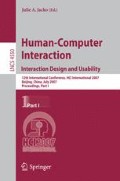Abstract
People often believe that fidelity is an important principle of cartographic information representation, that is, the closer of the geo information representation to the real world the better. However, excessively high fidelity of geo information representation does not necessarily bring about effective navigation and convenient reading, as excessive information representation may bring about cognitive burden to users, thereby affecting usability of users. Based on study of the form of the traditional map representation of China, the author finds that during drawing of map by the ancient people, in view of the user’s mental model and the specific setting for use, they were good at adopting multiple forms of information representation to lessen user’s cognitive burden, increase user’s intuition for reading, and bring about effective navigation. For inspiration of geographic information design, this kind of form of user’s mental model-oriented information representation is of certain significance.
Access this chapter
Tax calculation will be finalised at checkout
Purchases are for personal use only
Preview
Unable to display preview. Download preview PDF.
References
Xiaoying, Z.: Information Understanding-based Information Construction, People’s University of China Press (2005)
Zhaoguang, G.: History of Chinese Thoughts (Vol. II), FuDan University press (2001)
Wanru, C.: A Collection of Ancient Map of China. Cultural Relics Publishing House, Beijing (1994)
Yong, W.: History of Cartography of China. Sanlian Press, Beijing (1958)
Daozhang, J.: On Characteristics of the Traditional Cartography of China, Studies in the History of Natural Sciences 17(3) (1998)
Chang, S.-d.: Some Aspects Of the Urban Geography of the Chinese Hsien Capita1, Studies in the History of Natural Science, 17(3) (1998)
Chunmin, Y.: Enchantment of Brush Work of the Traditional Map of China, Source of manuscript: China Academic Journal Electronic Publishing house (2006)
Cang, Y.: Orientation in the Ancient Map, Source of manuscript: China Academic Journal Electronic Publishing house (2006)
The Nautical Technology of Zheng He’s Delegation, Source of manuscript: Combination of International On-line (2005)
Shulian, W.: Cosmic View Reflected in the Ancient Map of China, Source of manuscript: China Academic Journal Electronic Publishing house (2006)
Liangzhi, L.: History of Cartography of China, Beijing Publishing House of Surveying and Mapping (1984)
Raisz, E.: Principles of Cartography. McGraw-Hill, New York (1962)
Hsu, M.-l.: Descriptive Maps is the Chinese Cartography Tradition, In: paper presented at the 5th International Conference of the History of Science in China held at the University of California,San Diego, August 05- 10,1988 (unpublished)
Daozhang, J., Tingxiang, L.: Example of Map of Local Topography of Ming Dynasty, Research report on Map of Local Topography of China, Institute Geosciences, Chinese Culture University, Taibei (1995)
Cooper, A., Reimann, R.: About Face 2.0— Essence of Interactive Design, translated by Jianfeng, Z., Zhifei, Z. Publishing house of electronics industry, Beijing (2005)
Reilly, D.F., Inkpen, K.M.: Map Morphing: Making Sense of Incongruent Maps (2004)
Author information
Authors and Affiliations
Editor information
Rights and permissions
Copyright information
© 2007 Springer-Verlag Berlin Heidelberg
About this paper
Cite this paper
Yang, R., Li, D., Zhou, W. (2007). A Study on the Form of Representation of the User’s Mental Model-Oriented Ancient Map of China. In: Jacko, J.A. (eds) Human-Computer Interaction. Interaction Design and Usability. HCI 2007. Lecture Notes in Computer Science, vol 4550. Springer, Berlin, Heidelberg. https://doi.org/10.1007/978-3-540-73105-4_110
Download citation
DOI: https://doi.org/10.1007/978-3-540-73105-4_110
Publisher Name: Springer, Berlin, Heidelberg
Print ISBN: 978-3-540-73104-7
Online ISBN: 978-3-540-73105-4
eBook Packages: Computer ScienceComputer Science (R0)

